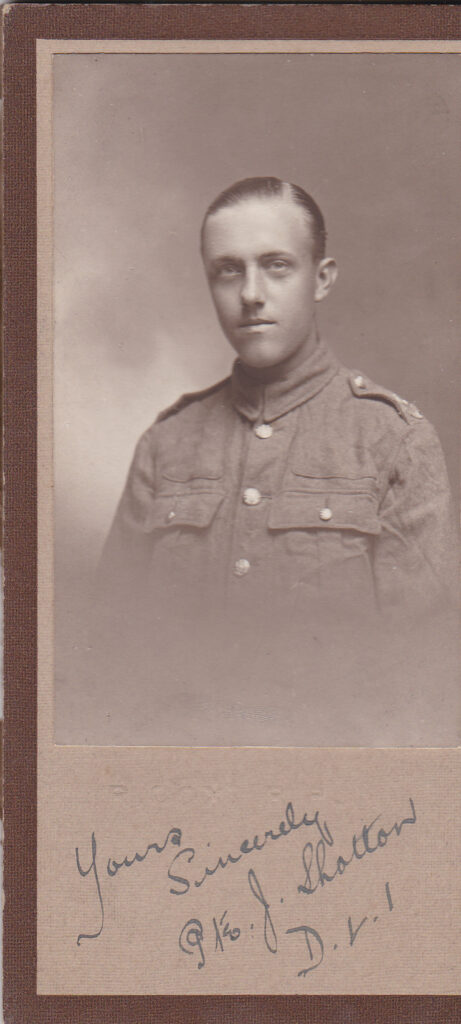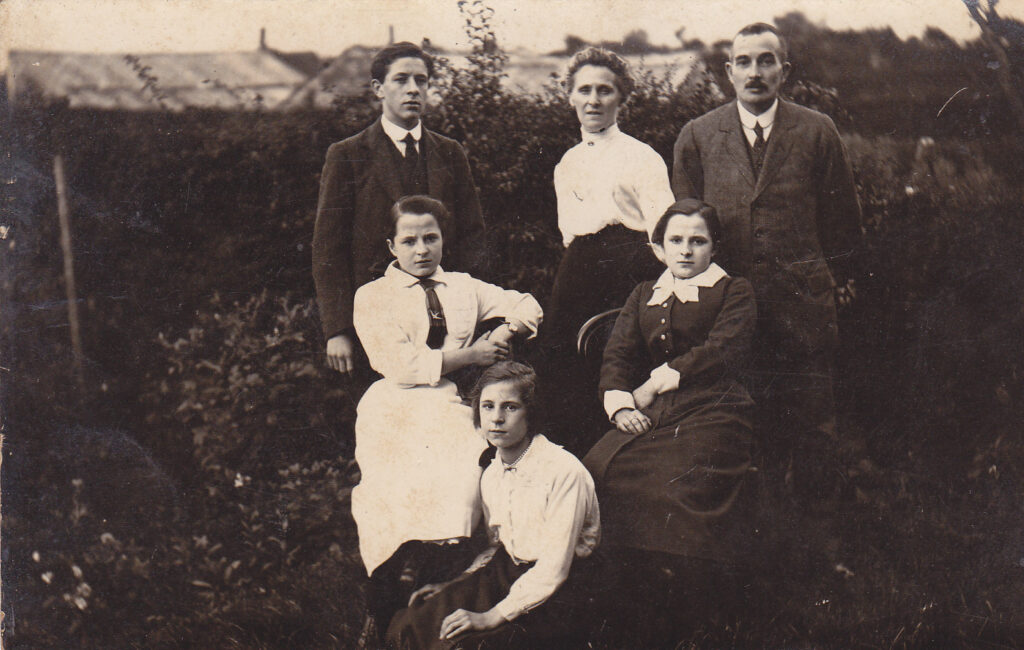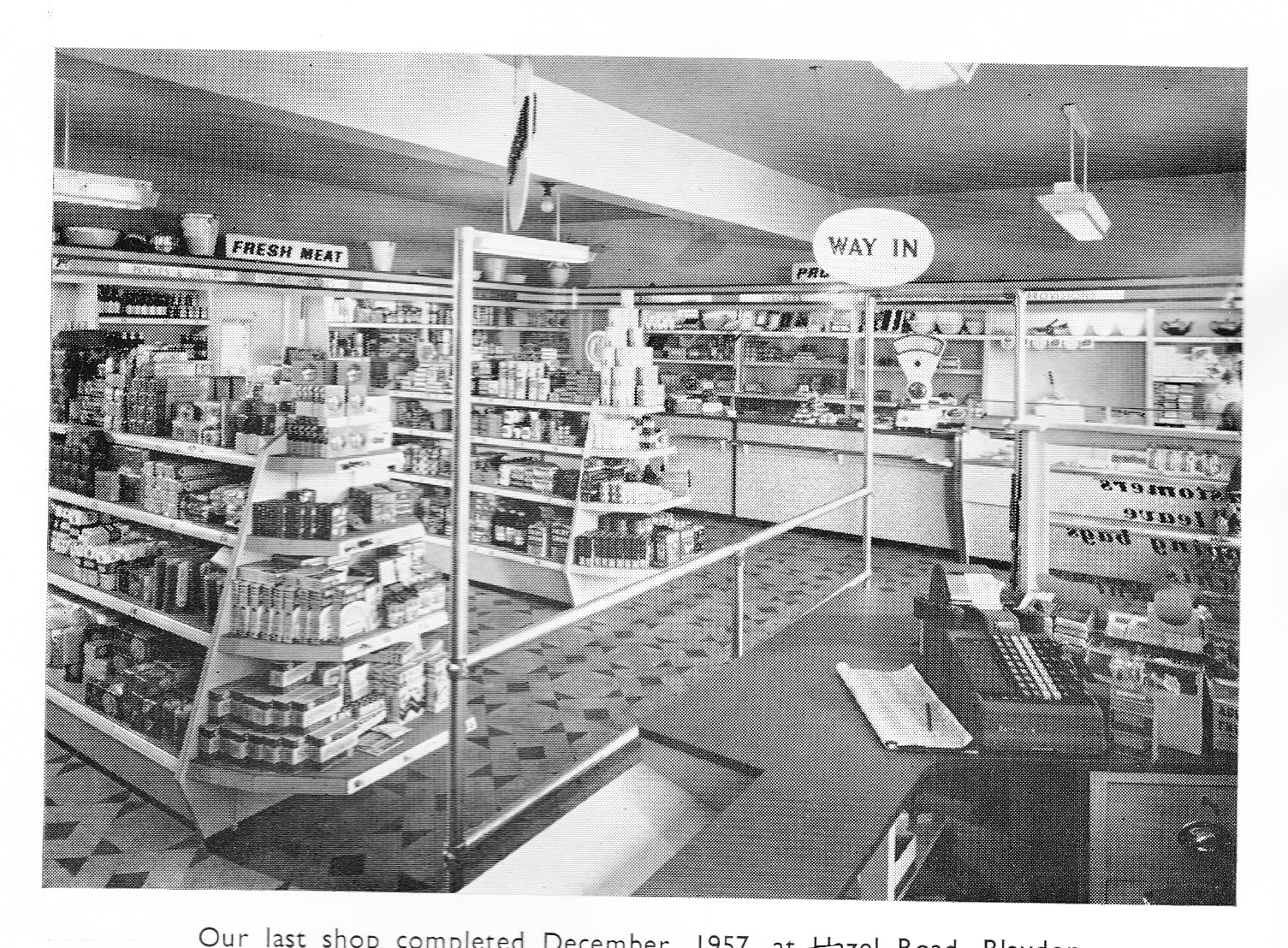The Martin’s Memories series has been reproduced with the very kind permission of Tony Martin from his posts on the Old Blaydon and Old Winlaton Facebook group.
OLD Blaydon and OLD Winlaton | MARTIN’S MEMORIES 17 | Facebook
Blaydon District Industrial and Provident Society Limited, popularly called the “Store” by my parents’ generation and later known as the Coop, was the second oldest society in Britain and was established in 1858. Many of my ancestors were connected with it in various ways and it played a dominant role in the life of Blaydon and also the neighbouring communities. Not only did it dominate Church Street, but there were also local branches at Shibdon Street, Harriet Street, Bleach Green, Hallgarth Estate and Hazel Road. The Blaydon Society also had branches at Winlaton, Lemington, Newburn, Scotswood, High Spen, Chopwell, Ryton, Prudhoe, Barmoor, Crookhill and Westwood. In the extremities of its area it competed with other societies, for example the West Wylam and Prudhoe Society in Prudhoe and in the past several shops had become independent societies. Members were shareholders and had a share or, in common parlance, a check number. Many remember these numbers because they had to be given with every purchase and a check given for the amount paid. This system had operated since 1889. Before this members received metal discs which could be exchanged for cash.
My family have been involved with the Coop since its early days. My great grandfather had been chairman of the Newcastle Society and a member of the family still has the key he was presented with when he opened the new buildings on Blandford Street. His son, Proctor Shotton was a commercial traveller for the Printing Department and another son, Vincent’s son, Jack became the Secretary of the Blaydon Society, and a daughter married Billy Henderson who managed the Low Prudhoe branch. Another son, Bob managed the Newburn branch. When my father left Walter Rea, he also worked in the Coop butchering department and his sister, Grace married Bert Turnbull, who was in charge of the Coop stables and later. caretaker. Most families were involved with the Coop either as a worker, a member or a customer.
In the 1940s and 1950s a walk down Church Street, the main shopping street in the Blaydon of my childhood, brought you first to a massive building which was the drapery and haberdashery department and where both ladies and gents could get clothes made to measure. My great grandfather, Isaac Martin (1840-86) was employed by the Society as a tailor. Next to this was the main butchering department, which was managed by Charlie Stanley with the able support of Dixon Hunter. Charlie had a dance band that played at Church Hall dances on Saturday evenings. He was always whistling and when he went into the back shop for meat be moved foxtrot like across the sawdust covered floor.
Just after this shop, there was a narrow street that led to St Cuthbert’s Place. Behind the butcher’s shop and up a wooden stair was the joinery and funeral furnishing department. The Building and Decorating Department operated from here too. Just beyond this, on the left hand side, was the Caretaker’s House. My Aunt Grace lived here because her husband, Uncle Bert Turnbull was the caretaker. He had previously been employed in the stables, but became caretaker when the horses were replaced by motor vehicles. The stables skirted the east side of the old graveyard connected to St. Cuthbert’s Church. Across the road from the Butchers there was also a garage and a staircase up to the Head Office, a place I often visited because my mother’s cousin Jack Shotton was the Secretary of the Society. Across this street was a “pipe” which carried the aerial payment system. When one gave the assistant the money required for a purchase, it and your check number was placed in a container and with the pull of a lever, this was propelled to the main cash office who returned your change and the duplicate check.
As one left this narrow street and turned right into Church Street again, there was the chemist, then the shoe shop, hardware and greengrocery departments in quick succession. There was another entrance to the Head Office by stairs. In 1954, I visited the shoe shop one Saturday morning and queued to obtain the autograph of Stanley Matthews who had come to open the newly renovated Footwear Department and, of course, to sell his autographed football boots. The central grocery department, which came next, was not self-service in those days. As one entered the main door, bacon, butter, cheese and other dairy produce were on the right and the other “dry” groceries like sugar were on the left. Straight ahead was a small office where you could obtain milk tokens, both pint and gill, which one put on the bottle when the milk delivery arrived at your home early in the morning. I can remember, another distant relation, Jack Jeffery working on the dry side where you got sugar weighed out into blue paper bags. On the dairy side, the blocks of butter and cheese from which your piece was cut stood together with sides of bacon. It was personal service in those days.
If you walked further down Church, past the Empire cinema and turned right into Tyne Street, there were another two butcher shops – the Pork Butcher and the Chilled Meat shops. The Coop also had a big presence on Shibdon Road. The Pavilion or “Store Hall” as the cinema was called locally, was leased from the local society. Next to it lay the Bakery Department and Cafe. The Coop also had a catering department where “Wedding cakes” were “our first care” and “your worries are banished with our complete service” I can remember Eleanor Parker and Caroline Reay, other distant relations operating here and then, when that shop closed around 1960, the baker’s shop was moved to the bottom of Church Terrace, next to a small branch of the Co-operative Bank. Next to the old Bakery Department and Cafe was the Reading Room and Billiard Hall.
Next to Blaydon West Infant School on Whitmore Road the Coop had a garage which housed amongst other vehicles, their mobile shops. A taxi service was also run from here. Later this was converted into a Funeral Parlour and that was used as that in 1982 and 1988 when my parents passed away. Underneath the garage was the Milk Department. I can remember that every evening a milk tanker from the Coop Dairy at Stocksfield would arrive and back into the narrow lane at the top of Church Terrace to deliver the milk, which was then bottled ready for delivery next morning. There was also a Central Coal Department where members could register to have coal supplied.
The Coop also ran its own credit system – the club card – where you could obtain a card for a certain amount. Your purchases would be entered on the card and you repaid at the rate of a shilling in the pound over 20 weeks. These were obtained at the main office where the dividend was also paid out half-yearly. There was always a queue here on “divi” days. In those days, the dividend was an important part of the household economy… it was always used to purchase something special. It was also quite high when I was a boy. Sad to say the only service that seems to remain is the Funeral Service and even here, one does not get “the final divi” as it was once advertised.
Photos:-
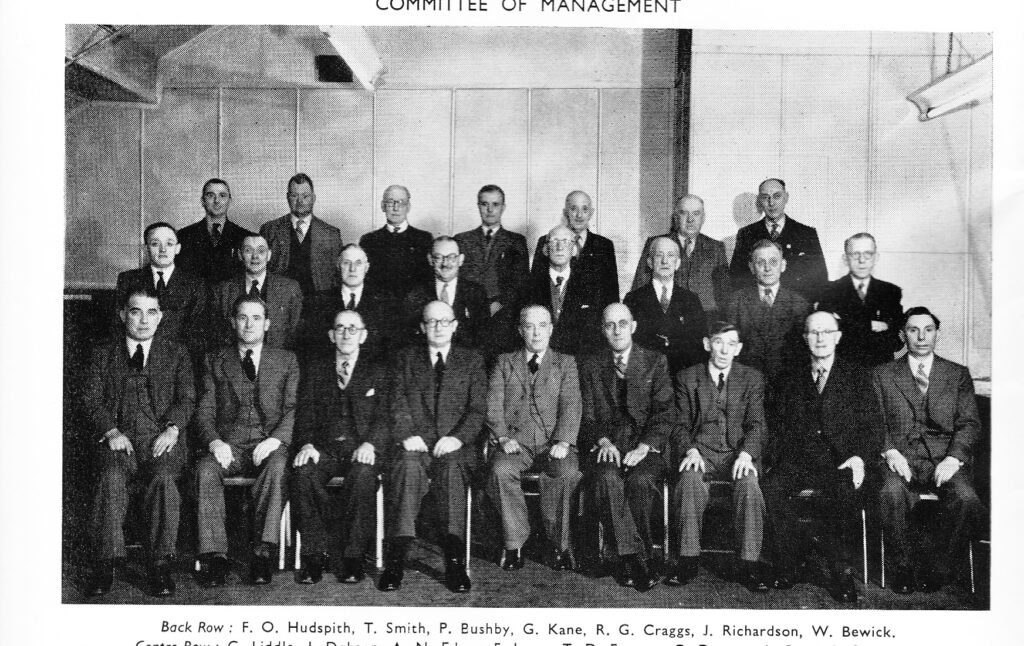
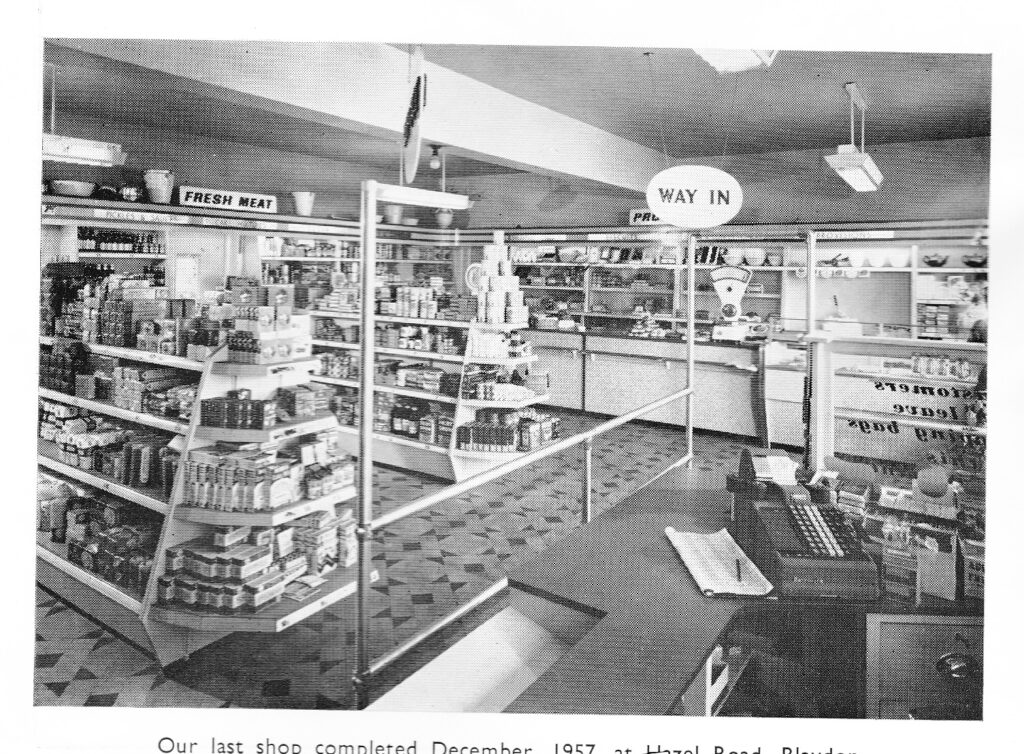
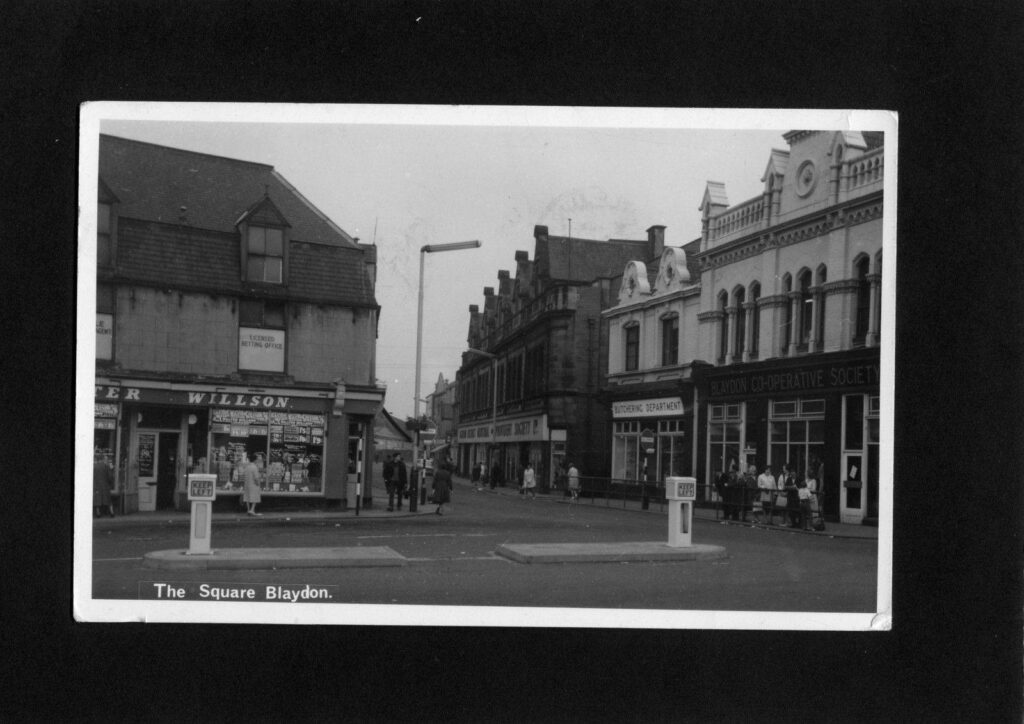
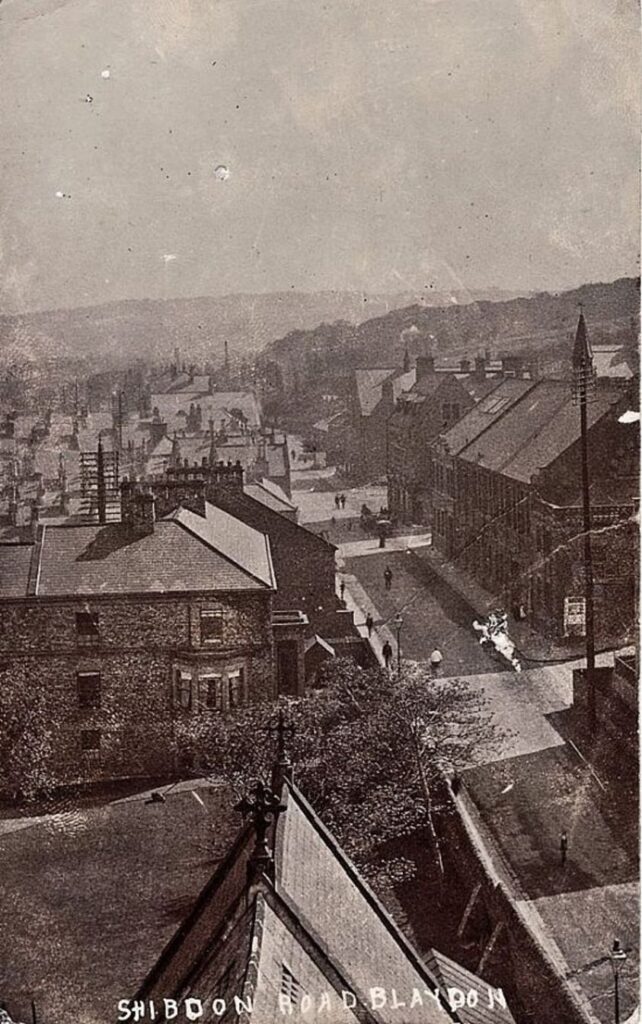
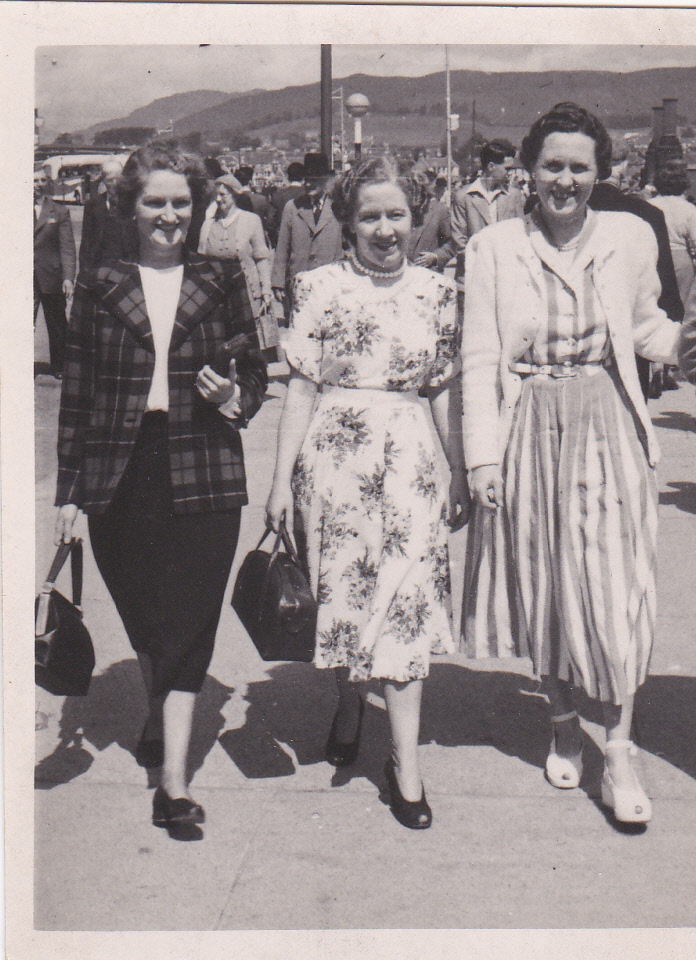
Mary Easton lived in Polmaise Street.
